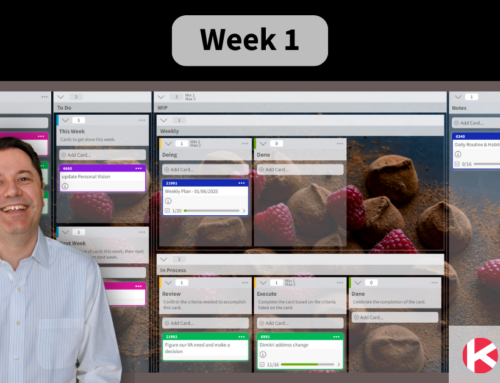
Are you looking for ways to do more for less time? Choosing the right productivity tool is the key to organization and consistency at work. Nowadays, there are a lot of apps focused on achieving more productivity and organizing your workforce. Whether you’re working individually or inside a team, you must’ve found it challenging to delegate certain tasks and activities and choose which tasks are more important. With a good productivity tool, you can improve your decision-making and organization of time, which will ultimately lead to improved focus, productivity, and results.
What to Consider When Choosing Productivity Tools
With so many productivity tools offered online, it feels quite challenging to choose the right one for the needs of your business or team. Testing different apps may feel overwhelming and if you don’t find the one immediately you might get discouraged from using productivity tools in the first place.
That said, stop the installation process and continue reading through our guide about what to consider when choosing productivity tools that are guaranteed to improve collaboration and workflow.
1. Consider Your Specific Needs
If you’re choosing a productivity tool just because all your coworkers and friends use it and it’s all over the internet and social media, that may not be the best approach. You will have to take a look at your daily habits, needs, business and team requirements, and other factors that determine how good a certain productivity tool is for you. For example, if you’re an affiliate marketer, a SubID tracking tool is a must-have.
Good productivity tools often cost money to get the most out of what they can offer and it’s pointless to spend money on a subscription to a tool that doesn’t meet your or your team’s needs.
You will also need to consider whether your productivity app of choice is more suitable for people who solve every problem one step at a time as opposed to the apps that are designed for multitaskers.
2. Is the App Intuitive?
Over the last few years, designers and developers prioritized user experience (UX) over the user interface (UI) to better understand the needs of their users and allow them to have a unique yet comfortable experience with an app.
With that in mind, many apps were designed with visible elements, understandable menus, intuitive tools, and other features in mind. Don’t forget that an app with an intuitive user interface will also allow you to be more productive, because the learning curve won’t be so steep, and you will get used to different in-app tools and layouts faster.
A good and intuitive user interface is such that will allow you to complete the most difficult tasks in the least number of clicks or keyboard taps. The user interface should also be optimized for mobile devices, as many people take their business on their phones and tablets when they’re on the go when they need to access some information quickly or make minor changes.
Still, if you will ever need an app that offers complex settings and features and allows you to customize and improve workflow, it’ll likely have a steeper learning curve. Apps that allow for integration of other apps are a valuable asset to people who want to automate their tasks, for example, if you work in social media marketing and management.
However, those apps may be more difficult to learn and may have a user interface that is more overwhelming at first sight. What’s more important is getting an app that will meet all your demands in terms of work style, habits, and user interface that feels comfortable for your eyes, regardless of whether you’re looking for an app that has simple or advanced features.
3. Workflow Automation
Most modern productivity tools support workflow automation. Some tasks just tend to be too repetitive and redundant. If you find yourself spending an excessive amount of time doing some mundane and repetitive tasks that could be automated, you need a productivity app that supports workflow automation.
For example, if you frequently spend a lot of time processing monthly payments and invoices, you can automate recurring payments to reduce the manual workload and make it easier for you to generate recurring revenue.
Several AI-driven tools can help you schedule your meetings, summarize your notes and make some other tasks more concise.
4. Integration with Other Tools You Use
Your business tools need to be connected in some way. That allows you to minimize the repetition of certain tasks like data imports and other challenges. Your productivity tool needs to integrate with other tools. Juggling between similar productivity apps that can’t connect one to another will feel exhausting and will waste your time in the process.
The work culture is becoming fast-paced, so it always comes in handy to use two apps together to achieve better results. Otherwise, you may face concerns and challenges optimizing your workflow that is suitable for your business or team.
There are several integration apps that you can use to connect different third-party apps, but it’s always better to check whether you’re choosing productivity tools that can work well together.

5. Compare it to Productivity Tools You’re Using
If you’re currently eyeing several productivity tools, the best way to choose the right one is by comparing it to what you’re using now. The new tools you want to choose need to ensure that you will achieve more and provide features and options that will either allow you to complete tasks faster or complete more tasks.
If your current productivity tool already meets all your goals and you won’t make use of the extra features new productivity apps offer, perhaps they are not worth it.
6. Consider the Costs
Good productivity tools aren’t cheap. They’re usually offered as a one-time payment or monthly subscription. One thing you need to consider is whether all those expenses are worth the final product you get. Testing some features that look cool but don’t necessarily benefit your current business model can prove to be distracting and disrupt your productivity.
That’s why it’s important to always weigh in on all the costs so that the cost of productivity doesn’t become higher than the financial costs.
7. Support & Educational Material
The first thing you need to check when choosing productivity tools is whether the company that offers it also offers a trial period or a money-back guarantee. Aside from that, a reliable productivity tool should always come with customer support that is either available through live chat or calls.
As mentioned earlier in the article, there’s a steep learning curve when transitioning from a minimalistic and intuitive productivity app to a more complex app with more advanced features. manners why it’s of utmost importance for the company to offer customer and technical support along with a frequently updated knowledge base and tutorials that will help you get used to the app in a timely manner.
Why Use Productivity Tools?
When choosing productivity tools one can’t help but ask whether you need them in the first place. Whether you’re using productivity tools to lead your business or work with your team, the right productivity tool will help improve collaboration and assist with task delegation.
Using productivity tools that are right for your business will allow you to set goals, assign tasks, create reports, and communicate with other employees and teammates without issues. Productivity tools can help you streamline your workflow and collaboration, making communication smoother and simpler.
Being productive at work will not only boost your morale but also your teammates and bring better results.
Conclusion
Choosing productivity tools for your business model is not easy. There are many business tools on the market, which makes the decision process more challenging and longer. Kanban Zone is a tool that will effectively improve the workflow of you and your team using Kanban boards, boosting productivity in the process. In addition to a lot of great features, you can combine them with other apps to enhance productivity. If you want to learn more about Kanban Zone and the toolkit it offers, sign up today for free!
Learn to Work Smarter, Not Harder!
Get our top articles weekly.
Table Of Contents
Discover many more posts…







